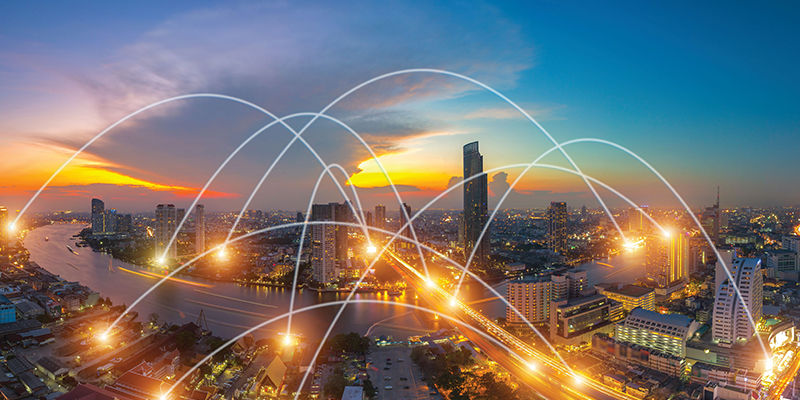Modernization from Substation to Grid Edge: The Benefits of a Holistic Systems Approach
Back to Top
The world is shifting rapidly. The aging grid is facing changing consumption patterns and extreme weather from climate change. At the same time, the shift toward electrification and distributed power sources is driving both exponential load growth and more distributed energy at the grid edge. Simultaneously, all of us—worldwide—are demanding greater reliability and resilience to sustain our digitally connected lives.
Key performance indicators, such as the System Average Interruption Duration Index (SAIDI) and System Average Interruption Frequency Index (SAIFI), were acceptable when they were established in the early 1970s. But now have an opportunity to embrace new and better measurements to reflect our modern world.
As industry leaders discuss what is needed to advance the grid, topics like transmission upgrades and managing the growth of renewable energy generation often consume the conversation, and rightly so. However, we seldom hear about how the ongoing energy transition impacts the part of the grid that interacts daily with individual customers. After all, our electric vehicles (EVs) don’t connect to 132 kV!
Investing in the Distribution System
As utilities undertake ambitious measures to evolve the power grid, investing in the distribution system is critical to meeting these challenges. While the distribution grid is the most vulnerable to weather and energy demands, it’s also the most essential part of the grid to successfully deliver power to our homes, businesses, and critical infrastructure.
Creating the electrical grid of the future requires a holistic systems approach from the substation to the grid edge. At S&C, this mindset informs how we innovate. We’re focused on ensuring our customers can completely cover their system with modern technology to create a more reliable, resilient, and sustainable grid.
Taking a Holistic Approach
As the backbone of the grid, the feeder is becoming more dynamic from electrification and distributed energy resources. The challenge of managing this increased activity on the feeder is compounded by the fact a fault in this area of the grid could impact critical infrastructure, such as hospitals or data centers.
Fortunately, there are all-in-one feeder solutions that enable greater segmentation, self-healing restoration, and even the ability to test for faults on the growing proportion of underground lines. When permanent outages occur, these devices can work together to isolate the issue to the smallest segment of customers and reroute power from alternate sources, thereby keeping more of the grid online. These stacked benefits give utilities the versatility they need to build on their own progress.
The grid edge is also growing in importance as people spend more time at home and EVs cause more load to manage. Overhead laterals are particularly susceptible to faults because they are so exposed, leading to frequent and expensive truck rolls. However, end-to-end lateral solutions are available that can test for faults and avoid unnecessary trips to the field. While these solutions bring immediate cost savings, they also increase customer satisfaction and make the grid more resilient.
As undergrounding continues to gain momentum to harden the grid against storms, there are not only robust offerings on the feeder but also at the grid end. Working closely with customers, we developed the EdgeRestore® Underground Distribution Restoration System. This revolutionary device introduces self-healing technology to underground residential distribution circuits, eliminating lengthy outages and improving customer reliability.
Creating the Future Grid
For us consumers, the future grid must become more reliable and resilient to combat increasingly severe storms, support the growing dependence on electricity, and enable the transition to clean energy. As utilities strategize for the future, we are here to help them realize comprehensive and long-lasting advancements to the grid, no matter where they are in their grid-modernization journey.